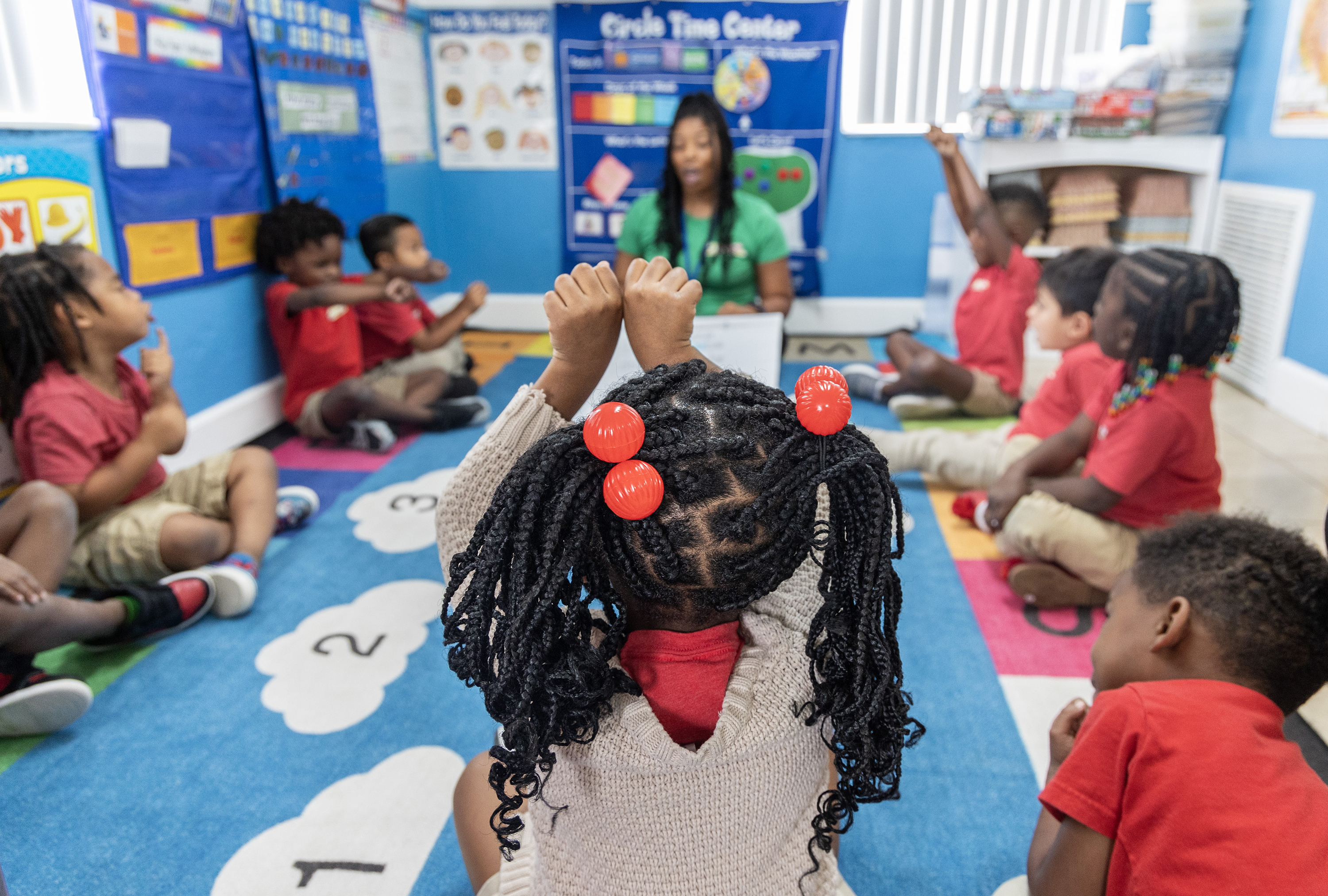
This story discusses suicide. If you or someone you know is at risk of suicide please call the U.S. National Suicide Prevention Lifeline at 1-800-273-8255, text HOME to 741741 or go to SpeakingOfSuicide.com/resources for additional resources.
Starting in seventh grade, Lily Allen, now a 20-year-old college student in Frisco, Texas, would often think to herself that no one wanted to be her friend, she wasn't smart or talented, and that she'd never achieve what she wanted in life. These ideas came and went quickly at first, so she never told anyone, until one day her freshman year of high school.
"I was deep in my depression hole, crying in my room," she recalled to TODAY. "I honestly felt like the world was ending, all the walls were closing in on me. I couldn't breathe. I was like, there's no way to get better."
A survivor's story
Get top local stories in Southern California delivered to you every morning. Sign up for NBC LA's News Headlines newsletter.
Allen texted a suicide note to her friend, who called the police. When they arrived and spoke with her family, the then 14-year-old told her parents for the first time how she was feeling: She believed killing herself was the best way to deal with the severity of her emotions.
"The rational part of me was like, it gets better than high school, but then the very emotional, sad, beaten-down child part of me was like, there is no way out of this," Allen said. "I think it was my last ditch-effort to get help from a person who I could confide in more comfortably than my parents because I didn't even know how my parents were going to react when I told them I was depressed. It wasn't a thing we talked about in our house."
At 2 a.m., she went to the emergency room at Children's Health in Dallas and was admitted several hours later.
U.S. & World
News from around the country and around the globe
"Even then, sitting in that hospital room, I was still thinking, 'Why couldn't I have gone through with it?' and, 'I need to get out of here, I'm not crazy,' all of these rapid fire thoughts, most of which I can't even remember now because of how fast they were coming at me," she said.
After spending eight days in the psych ward, she joined the hospital's Suicide Prevention and Resilience at Children’s (SPARC) program, where she learned tools to combat negative thoughts. They served her recently during the pandemic while stuck at home and "super depressed," as she described it.
U.S. teen suicide rates on the rise
Allen's story aligns with a larger trend among American teens, especially girls, that the pandemic may have exacerbated. From 2007 to 2018, the national suicide rate among people 10 to 24 years old increased 57.4%, according to a 2020 report from the Centers for Disease Control and Prevention.
A more recent CDC report found that in May 2020, emergency department visits for suspected suicide attempts by 12 to 17-year-olds began to increase. From February to March 2021, suspected suicide attempt ED visits among girls 12 to 17 were 50.6% higher compared to the same period in 2019. For boys in the same age group during the same time frame, the rate was 3.7% higher versus 2019.
Dr. Beth Kennard, the director of the SPARC program, said Children's Health has also seen increasing numbers of children visiting the emergency room for mental health problems, especially suicidal thoughts and behavior, during the pandemic. While this includes boys, the increase seems greater among girls, she told TODAY.
"At Children's, almost half the children in our emergency room are there for behavioral health and mental health issues, so it is certainly a crisis," she said.
Dr. Christine Yu Moutier, chief medical officer at the American Foundation for Suicide Prevention, cautioned that while the recent CDC data is "very concerning," it doesn't automatically mean suicide death rates for young people have increased during the pandemic.
Why? Many of these ED cases might actually be examples of the child seeking help rather than attempting suicide, and help-seeking rates going up in a community often indicate improved mental health in the community overall, she said. Pre-pandemic, teenage girls attempted suicide at three to four times the rate of boys, but boys died by suicide at a rate two to three times higher, Moutier explained.
It's possible suicide rates among teen girls have increased during the pandemic, but the finalized data isn't available yet, Moutier said. Still, many of the changes teens experienced during the pandemic give parents extra reason to be proactive about their teen girls' mental health.
The pandemic and teen girls' mental health
"These increases (in suicidal ideation and behavior) were apparent even before the COVID pandemic, but have worsened over the time of this pandemic," Kennard explained. "We believe that's partially because of higher levels of social isolation ... more difficulty in school with the online format, and economic pressure and stress on the family, which translates to the kid."
Moutier said the CDC data indicates that "something is happening in the COVID environment that possibly is harder on girls in terms of their social structure and the disruption of that." She posited that seeing their peers in person might've mitigated some of the negative effects of social media for girls. And teens have been using social media even more during the pandemic, a September 2020 survey by Lurie Children's Hospital of Chicago indicates.
Social media actually bolstered Allen's suicidal ideations. "I gave people 24/7 access to me and never took a break from it," she recalled. "It was a comparison game for me. 'Oh, this party I wasn't invited to.' That just to me proved my point that no one wanted to be friends with me. ... Sometimes teenagers use social media to say terrible things about people in their school."
Through AFSP volunteers working with teens during the pandemic, Moutier has noticed a common theme among teen girls: Those who hadn't been diagnosed with anxiety or depression and were high achieving pre-pandemic lost their lives' existing structure, allowing the vulnerabilities they may've had to depression or anxiety to present themselves.
But it's not just losing in-person social interaction with classmates and teammates that can lead to mental health challenges for teens during the pandemic.
"The pandemic has dismantled protective factors for kids, (such as) family time together, where there's lightness, open dialogue and laughter," Moutier said. "Now, parents have to take on a second and third job to pay the bills and everything becomes very strained."
Through AFSP volunteers working with teens during the pandemic, Moutier has noticed a common theme among teen girls: Those who hadn't been diagnosed with anxiety or depression and were high achieving pre-pandemic lost their lives' existing structure, allowing the vulnerabilities they may've had to depression or anxiety to present themselves.
But it's not just losing in-person social interaction with classmates and teammates that can lead to mental health challenges for teens during the pandemic.
"The pandemic has dismantled protective factors for kids, (such as) family time together, where there's lightness, open dialogue and laughter," Moutier said. "Now, parents have to take on a second and third job to pay the bills and everything becomes very strained."
She doesn't know why girls might be more negatively affected by these changes than boys, but she speculated that shifting social dynamics with peers could hit girls harder.
How you can help your teen
For parents, Moutier said the main takeaway from the CDC data should be "to not wait for a crisis to occur in our children, especially our girls, but to proactively cultivate an environment at home and in your relationship ... where you let them know that no topic is too challenging, no challenge is too big for this family to handle together, and that you welcome hearing about the challenges they're facing and that you're going to work together as a team to figure out solutions."
Parents should also stress that mental health is a part of overall health and that kids should look for any changes in their own mental health, like sleep issues, lower energy or thoughts of feeling trapped or overwhelmed. Moutier suggested telling the child, "These are human experiences, nothing to feel ashamed of, but they are things we want to know about so we can work on them together."
But keep in mind your child might not open up when you invite the conversation. They might bring it up when you don't expect it.
"If you're busy doing something and they start talking about their internal world, you just have to ... put down what you were doing and pay attention," Moutier said. "It's not the time where you can jump in and say, 'Oh, you're going to be fine,' or, 'You shouldn't have done that.' That will just shut them down."
Instead, ask questions, like: Can you tell me more about that? What's going on with your friends, in class or on your team? How is that affecting you? Moutier said if the child talks about feeling hopeless or trapped, there's a good chance suicidal thoughts are present, too, and it's OK to say directly, "When you talk about that, it makes me wonder if you had thoughts of ending your life."
Let them respond, and if they are having suicidal thoughts, stay in the conversation. (Don't panic and call 911 — reserve that for if they're in the process of harming themselves, Moutier said.) Then get your child's pediatrician involved and find a trusted mental health professional in your community.
If you're concerned about your child because you've noticed warning signs such as a drop in grades, losing interest in activities or changing friend groups, but they haven't said anything, you can reach out to teachers, coaches and others close to them to inquire about any changes they may've noticed. Then you can approach your child and ask while emphasizing that they're not in trouble, Moutier said.
"Ultimately, the most important thing isn't that they open up to you, it's that they get the help they need," she explained. "If they can't talk to you for whatever reason, but they will talk to the guidance counselor or their coach, that's just as good."
Parents should also be aware of the risk factors for teen suicide, including mood or trauma-related disorders, bullying, substance use or struggling with sexual orientation, according to the Child Mind Institute. For girls predisposed to depression, onset of puberty is another a risk factor, Kennard added.
Last, Kennard and Moutier said the most life-saving thing a parent can do if a child is struggling with mental health is to keep the home clear of lethal means. Remove or secure any firearms, medications and toxic substances.
Related:
This story first appeared on TODAY.com. More from TODAY:



